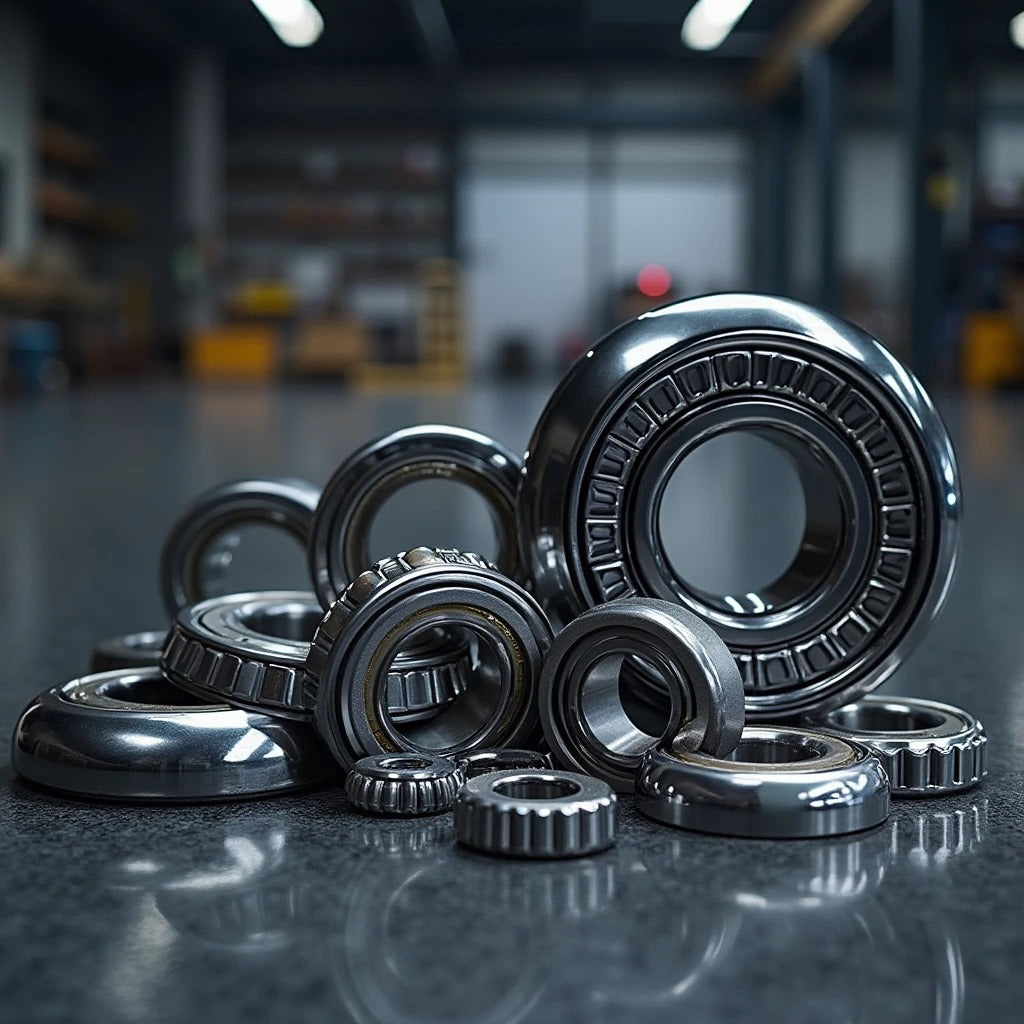What should we pay attention to when choosing bearings?
by
oguzhan melek
30 Oct 2024
When choosing bearings, it's important to pay attention to several key factors to ensure they meet your application's requirements:
1. Load Requirements: Determine both the static and dynamic load capacities to ensure the bearing can handle the expected forces.
2. Speed Rating: Check the bearing’s maximum speed rating to avoid overheating and wear during operation.
3. Type of Bearing: Choose the appropriate type (e.g., ball bearings, roller bearings, thrust bearings) based on the application's specific motion and load characteristics.
4. Material Consider materials (steel, ceramic, plastic) based on factors like strength, corrosion resistance, and operating temperature.
5. Lubrication Needs: Decide on the lubrication type (grease or oil) and whether it requires relubrication; some applications may need sealed or shielded bearings.
6. Operating Environment: Evaluate conditions such as temperature extremes, moisture, dust, and chemical exposure to select suitable bearings.
7. Clearance and Fit: Determine the necessary internal clearance and fit tolerance (e.g., interference fit vs. clearance fit) for optimal performance.
8. Vibration and Noise: Consider any vibration or noise requirements; precision bearings may be needed for low-noise applications.
9. Mounting and Installation: Ensure compatibility with your assembly method and available space, as some designs may require specific mounting techniques.
10. Cost and Availability: Assess the budget and availability of the bearings, balancing performance with cost-effectiveness.
By carefully evaluating these factors, you can select bearings that will provide reliable performance and longevity in your application.
1. Load Requirements: Determine both the static and dynamic load capacities to ensure the bearing can handle the expected forces.
2. Speed Rating: Check the bearing’s maximum speed rating to avoid overheating and wear during operation.
3. Type of Bearing: Choose the appropriate type (e.g., ball bearings, roller bearings, thrust bearings) based on the application's specific motion and load characteristics.
4. Material Consider materials (steel, ceramic, plastic) based on factors like strength, corrosion resistance, and operating temperature.
5. Lubrication Needs: Decide on the lubrication type (grease or oil) and whether it requires relubrication; some applications may need sealed or shielded bearings.
6. Operating Environment: Evaluate conditions such as temperature extremes, moisture, dust, and chemical exposure to select suitable bearings.
7. Clearance and Fit: Determine the necessary internal clearance and fit tolerance (e.g., interference fit vs. clearance fit) for optimal performance.
8. Vibration and Noise: Consider any vibration or noise requirements; precision bearings may be needed for low-noise applications.
9. Mounting and Installation: Ensure compatibility with your assembly method and available space, as some designs may require specific mounting techniques.
10. Cost and Availability: Assess the budget and availability of the bearings, balancing performance with cost-effectiveness.
By carefully evaluating these factors, you can select bearings that will provide reliable performance and longevity in your application.
Sample Block Quote
Praesent vestibulum congue tellus at fringilla. Curabitur vitae semper sem, eu convallis est. Cras felis nunc commodo eu convallis vitae interdum non nisl. Maecenas ac est sit amet augue pharetra convallis.
Sample Paragraph Text
Praesent vestibulum congue tellus at fringilla. Curabitur vitae semper sem, eu convallis est. Cras felis nunc commodo eu convallis vitae interdum non nisl. Maecenas ac est sit amet augue pharetra convallis nec danos dui. Cras suscipit quam et turpis eleifend vitae malesuada magna congue. Damus id ullamcorper neque. Sed vitae mi a mi pretium aliquet ac sed elitos. Pellentesque nulla eros accumsan quis justo at tincidunt lobortis deli denimes, suspendisse vestibulum lectus in lectus volutpate.



